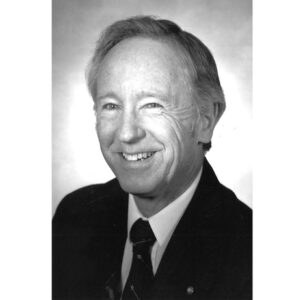William Corman

 Warren Corman, age 99, died in Lawrence, KS on August 28th, 2025. He will be buried in Pioneer Cemetery on the campus of the University of Kansas. A celebration of life will be held 2:00 PM, Wednesday, September 17, 2025, at First Presbyterian Church in Lawrence. Corman was born on July 31, 1926, to Emmett J. Corman and Miriam E. Twineham Corman in Kansas City, KS. He attended Maccachaque Grade School at Olathe and Rainbow Boulevard in Kansas City and Oak Grove Grade School in the county west of Argentine, KS. His parents then moved to Topeka in 1939 where he graduated as Salutatorian of Washburn Rural High School in June of 1944. His father designed this school.
Warren Corman, age 99, died in Lawrence, KS on August 28th, 2025. He will be buried in Pioneer Cemetery on the campus of the University of Kansas. A celebration of life will be held 2:00 PM, Wednesday, September 17, 2025, at First Presbyterian Church in Lawrence. Corman was born on July 31, 1926, to Emmett J. Corman and Miriam E. Twineham Corman in Kansas City, KS. He attended Maccachaque Grade School at Olathe and Rainbow Boulevard in Kansas City and Oak Grove Grade School in the county west of Argentine, KS. His parents then moved to Topeka in 1939 where he graduated as Salutatorian of Washburn Rural High School in June of 1944. His father designed this school.
Corman enlisted at age 17 in the Navy Air Corps and undertook flight training at both Jacksonville and Memphis Naval Air Stations in 1944. Before receiving their pilot's wings his group of young sailors were transferred to Port Hueneme, CA, the home base of the Navy Seabees. The navy had more pilots than they needed and really were short of Navy Construction Battalion personnel (Seabees). Corman trained there with the US Marines for beach assaults, fighting the enemy and backing up the Marines with necessary construction projects. While in training at Port Hueneme his father died in Topeka at age 47 leaving his mother and a younger brother, Emmett Gary Corman, at home.
In February 1945 the Seabees and the Marines boarded the USS Crittendon at Treasure Island in San Francisco bay and sailed out to sea under the Golden Gate bridge. The ship was a large troop ship and was nicknamed the ‘Galloping Ghost’ because of waging so many battles in the Pacific without being sunk. The convoy to the South Pacific was slow as it zig-zagged south and westerly at eight knots, being held to that speed by the large contingent of Landing Ship Tanks (LST) in the convoy. The convoy joined hundreds of other ships attacking an island unknown to most in the Ryuku Island group south of Japan- the island of OKINAWA. The US Navy lost more ships and personnel in this assault than ever before in history, mainly due to the Kamakazi plane attacks. After a terrific land and sea battle the island was secured by US and Allied forces in July 1945. We suffered 50,000 casualties including 12,000 dead. The battle plan then was to take the attack to the mainland of Japan in November 1945 with about one million US troops. Predictions were that we would lose about one-half of our personnel in the assault on the Japanese mainland.
Early in August of 1945 the US Airforce dropped two atomic bombs on Japan and the Japanese surrendered.
Corman stayed on OKINAWA under the command of the Marines in a Military Government position to help put the island back into a habitable condition for the natives. Corman returned home to Topeka on Mother's Day of 1946 at age 19 and enrolled in the School of Engineering and Architecture at KU with the help of the GI Bill.
Corman graduated in architectural engineering in June 1950 while working in the state architect's office in Topeka from 1947 on. He married Juanita Finson in November 1947, and they subsequently had four children, Becky, Cathy, David and Nancy. He worked full time for the state architect from June 1950 to June 1957 helping design projects for the state universities. Several projects included Allen Fieldhouse, Ahearn Fieldhouse and the original Student Union in Manhattan, Cram Science Hall in Emporia and an addition to the Student Union in Hays. He took a year's leave in 1955 to work with the Santa Fe Railroad to design a new passenger depot for Lawrence, KS.


